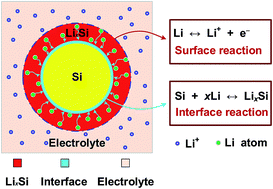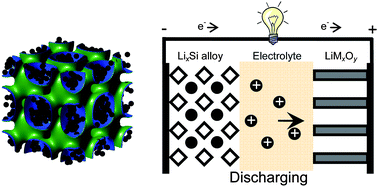Currently, industries and operations are shifting to renewable sources of energy. With this in mind, it is essential to have storage equipment to tide over low production cycles. At present, Lithium-ion batteries are being used for this purpose, but they are not capable of high energy requirements. A team of researchers from the University of California, San Diego worked with LG Energy Solutions to work on energy-dense batteries by developing a solid-state battery with a silicon anode.
Graphite coated in copper foil is used as anode in lithium-ion batteries. This works well but for higher energy projects like electric-powered flight and storage grids, scientists believe that silicon could potentially solve the problem.

According to the study done, if silicone is used as an anode in the lithium-ion battery, it will make 10 times more capacity than the graphite one. In the past, silicone has been used but the functionality created problems of capacity losses as silicone expanded and contracted when charged and discharged.
In order to solve this problem, the researchers, led by Professor Shirley Meng at UC San Diego, decided to use a sulfide-based solid electrolyte instead of the regular liquid one. This eradicated carbon and polymer binders that were used with silicone anodes earlier. This addressed the capacity loss issue.

The findings and results of the research will be published in the September 24 issue of the journal Science.
“The solid-state silicon approach overcomes many limitations in conventional batteries,” said Darren H. S. Tan, the first author of the paper. “It presents exciting opportunities for us to meet market demands for higher volumetric energy, lowered costs, and safer batteries especially for grid energy storage,” Tan is also the CEO of a startup, UNIGRID Battery. The technology will be licensed for solid-state silicon batteries. LG Energy Solutions, a partner in the research, has plans for mass production of solid-state batteries by 2027.


